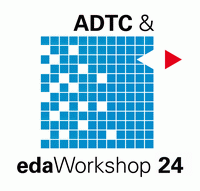A Configurable Ultra-low Power Edge AI Accelerator Platform for Intelligent Sensor Processing
Oliver Bringmann (U Tübingen, D)
Abstract
AI applications are increasingly penetrating all areas of life, from the smallest systems in the human body for medical diagnosis, through automated driving, up to complex data analysis and language models on high-performance server systems. In contrast to the biological model, the performance of artificial neural networks can so far only be realized with an order of magnitude higher energy demand. Therefore, holistic solutions for energy- and resource-efficient AI are needed to enable its use in a wide range of applications, including the smallest sensor devices. In this talk, a flexible configurable AI accelerator platform is presented that can be adapted to different application domains, such as medical in-body sensors (diagnostic capsules, neuro-implants) and smart automotive sensors, by an automated AI system HW/SW codesign process. Several chips have already been taped out in Globalfoundries' 22FDX technology, operating with a power consumption between 500nW and 10µW while ensuring given real-time constraints.
Curriculum Vitae
Oliver Bringmann is Professor for Embedded Systems at the University of Tübingen, Germany and is serving as head of the Department of Computer Science. He studied computer science at the University of Karlsruhe (KIT) and received the doctoral degree (PhD) in computer science from the University of Tübingen in 2001. Until April 2012 he was with the FZI Research Center for Information Technology in Karlsruhe, Germany, in various positions as Department and Division Manager and Member of the management board. His research interests include electronic design automation, embedded system design, timing and power analysis of embedded software, embedded AI architectures, hardware-enhanced security, and robust perception. He has served in many technical program committees of international conferences such as DAC, DATE, CODES+ISSS, CASES, IV, ITSC, DSD, RTSS, and others. He is author and co-author of more than 220 publications in the area of electronic design automation, embedded system design, and SoC architectures for automotive electronics and edge devices.










